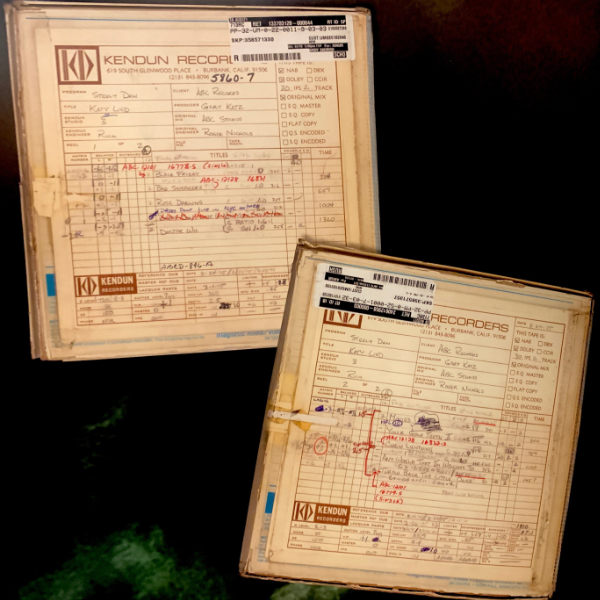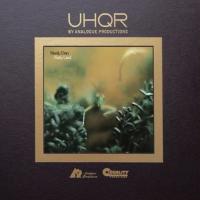The 200g 45rpm 2LP UHQR Edition of Steely Dan’s Katy Lied Sounds As Good As Any Vinyl World That It’s Welcome To
Mike Mettler: Who are these children / Who scheme and run wild. . . No, that’s not a comment on the youth of today, but rather a piercing lyrical couplet of sorts that can only mean one thing — it’s time for us to dive deep into the just-released 200g 45rpm 2LP UHQR edition of Steely Dan’s March 1975 treasure of an LP, Katy Lied. (My initial report about this important release, which posted here on AP on January 6, 2025, can be read here.)
This also means that it’s also time once again for one of AP’s patented three-way reviews, something we’ve been doing with certain important LP releases that deserve much more thoughtful, in-depth coverage than mere in-the-moment, day-and-date postings. Hence, I’ve once again reconvened the reviewing troika consisting of myself, Mark Smotroff, and Ken Micallef to tackle Katy Lied collectively.
The 200g 45rpm 2LP edition of Katy Lied is the next-to-last UHQR in Analogue Productions’ massive SD reissue campaign, with May 1976’s The Royal Scam expected to round out the SD UHQR series sometime later this year. Until then, we have much to enjoy with our repeated listenings of Katy Lied in all its UHQR glory — and, with that, I will now turn things over to Mark to get the review nitty-gritties underway, with Ken and myself adding in our own thoughts and notes all throughout. Over to you, Mark!
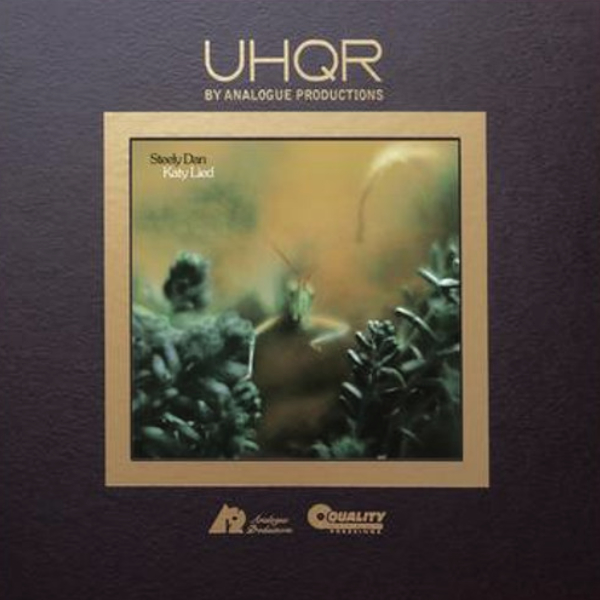
Mark Smotroff: Thanks, Mike! The technical problems with Steely Dan’s 1975 Top 15 smash-hit album Katy Lied are fairly well-known to most audiophiles and fans of the band. Still, the big question I had as I approached reviewing this (spoiler alert!) generally wonderful UHQR edition of the album is whether the overall fidelity could be dramatically improved over prior editions. The answer, with few caveats, is a resounding yes!
Before we dig down into our track-by-track discussion of the fabulous new UHQR edition of Katy Lied, let’s first revisit the all-important DNA behind this important release. From the official materials, we know that the entire series of Steely Dan UHQRs adheres to the following tenets: “All albums are being meticulously remastered by Bernie Grundman from the original analog tapes except for Aja, which [was] mastered from an analog, non-EQ’d, tape copy, and Gaucho, which [was] sourced from a 1980 analog tape copy originally EQ’d by Bob Ludwig. [. . .] The 45rpm UHQR version[s] will be pressed at Quality Record Pressings on 200g Clarity Vinyl, packaged in a deluxe box, and will include a booklet detailing the entire process of making a UHQR along with a certificate of inspection. Each UHQR is pressed, using hand-selected vinyl, with attention paid to every single detail of every single record.”
Pressed in a limited edition of 20,000 copies, the 200g 45rpm 2LP UHQR edition of Katy Lied is presented in admittedly visually stunning manner, just as the entire SD series has been done to date. This is gorgeous, escalated packaging that goes above and beyond the underlying aesthetic hinted at in the original album design. For example, on the back cover (as seen below), the band paid homage to classic Atlantic Records releases of the 1950s and early ’60s, with the fine-line rectangle surrounding the centered credits. They even include audiophile-centric production details that went into the making of the album, just like a vintage jazz release of that period would.
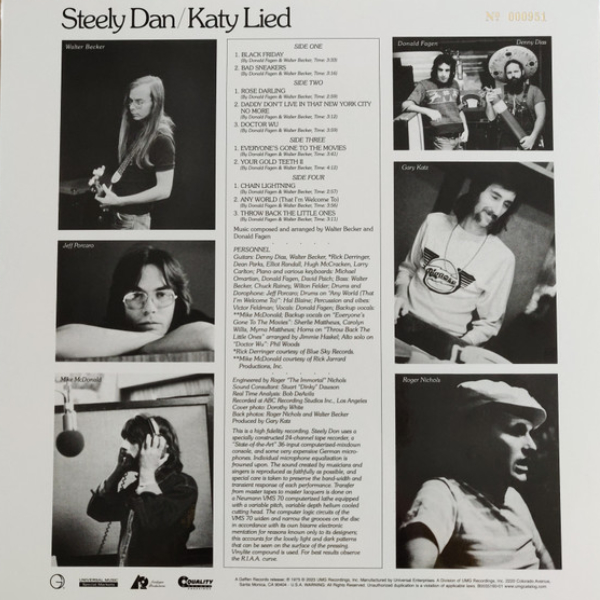
Smotroff: The producers at Analogue Productions took this project that extra step to transform Katy Lied into a glorious, film-laminated cover design — so it feels like a classic Blue Note, Atlantic, or Impulse! release. It features a vintage tip-on style, gatefold double-pocket jacket made by Stoughton Printing. In short, the UHQR cover of Katy Lied looks gorgeous!
But, of course, the sound of the new UHQR Katy Lied is what most of us want to know about, so I’ll put it this way at the outset — unless there is some future possibility of an SD remix-oriented project utilizing the tech Peter Jackson’s team used for restoring certain Beatles recordings or Jamie Howarth’s Plangent Processes, this new UHQR edition of Katy Lied is not likely to be bested.
The SRP for the UHQR edition of Katy Lied is $149.99, which is the standard going rate for all other entries in this series. You can get yours here at Music Direct, or via the MD link graphic following the review text that’s just ahead of the tracklisting section. The companion, standard remastered 180g 1LP edition from Geffen/UMe (which will be discussed later in this review) is available here from MD for $29.99. (If MD happens to be sold out of the latter, you can put in a reserve request for when it gets restocked, or go to the band’s official site here to order one now.)
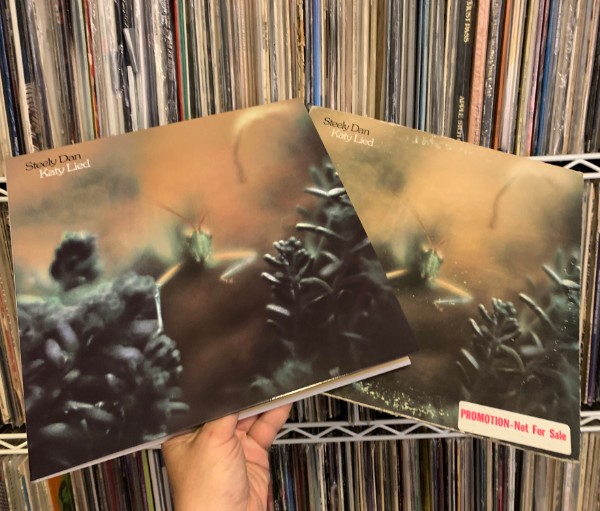
Mettler: Agreed re your Katy Lied UHQR spolier alert assessment, Mark! Ok, Ken, your turn to jump in here.
Ken Micallef: You got it, Mike! To me, Katy Lied isn’t just a Steely Dan album — it’s a sonic tollbooth. Sandwiched between the raw swagger of their early work and the immaculate sheen of 1977’s Aja and 1980’s Gaucho, it’s where Walter Becker and Donald Fagen pay the price for future perfection. The result? A charmingly schizophrenic mix of homey swing and gripping romance-gone-wrong hilarity. It’s not quite Can’t Buy a Thrill’s youthful 1972 exuberance, or Pretzel Logic’s 1974 acoustic quirk, but Katy Lied is a fascinating glimpse into the sausage-making process of genius — sometimes delicious, sometimes depraved.
This UHQR pressing of Katy Lied isn’t just an upgrade — it’s a remastering-class-worthy revelation. Like the previous five Steely Dan UHQR releases that have all been reviewed in fine, meticulous detail here on AP, Katy Lied performs a sonic miracle — sharpening the resolution, unveiling hidden nuances, and vastly expanding the soundscape. For Dan devotees, these UHQRs aren’t mere “music containers” — they’re essential artifacts, built to last generations. And, considering my own journey from a “freak” teenager on grandma’s North Carolina farm to someone still obsessed with Steely Dan, it’s clear these albums aren’t just lasting — they’re life-altering.
Mettler: Can’t argue with you on that latter point, Ken. As always, I remain fascinated by what Donald Fagen reveals in each UHQR edition’s liner notes, and what he chooses to share here about Katy Lied is no exception. What say you?
Micallef: Let’s dig into what he says. “On July 5th, 1974, we played the last gig we’d play for like twenty years. What a relief,” Fagen writes in these (to me) all-too-brief liners. Then he continues, “And since Pretzel Logic was a big hit, Dunhill gave us a somewhat bigger recording budget. We settled into the A Room at ABC Dunhill and set up a pair of Magneplanar flat panel monitors. The studio was equipped with a brand new Bösendorfer grand piano and a couple of AR D76 tube power preamplifiers. We were ready to make high fidelity our bitch.”
Fagen also alludes to the legendary DBX disaster that nearly killed Katy Lied. That sonic disaster remains, to a much lesser degree, in the sound of drummer Jeff Porcaro’s hi-hats on “Everyone’s Gone to the Movies” (LP2, Side C, Track 1), recalling electrified cabbage rubbed against sandpaper. (We’ll do our full, song-by-song analysis a bit later in the review.)
Katy Lied also marks Becker and Fagen’s growing reliance on the studio musicians that would help cement Steely Dan’s genius in the years that followed. Those ringers included pianists Michael Omartian and David Paich; guitarists Hugh McCracken, Rick Derringer, Elliot Randall, Dean Parks, and Larry Carlton; bassists Wilton Felder and Chuck Rainey; alto saxophonist Phil Woods; drummers Jeff Porcaro and Hal Blaine; and vocalist Michael McDonald amongst them.
In short, the aforementioned improvements in resolution, nuance/detail retrieval, and soundstage width and depth make the UHQR Katy Lied something special to listen to again and again. Mark, back to you.
Smotroff: When I opened the mailer box containing my UHQR copy of Katy Lied, I was pleasantly surprised to see a special printed insert designed to mirror the look and feel of the original album’s inner sleeve — and also note that the lyrics are now in the gatefold spread of the expanded album cover. Now, rather than speculate further on what might have caused certain issues that Ken mentioned, I’ll just summarize that, once you get accustomed to the inherent sonic profile (if you will) of Katy Lied — replete with periodic phase-shift-y sounding, aurally excited vocals, and such — it is a fantastic album listen, start to finish.
To that, it is important to acknowledge that many discerning listeners may actually like the texture of how Katy Lied sounds simply because that is what they know and are used to. Since the album reached No. 13 on the Billboard Top 200 Albums chart in 1975, its popularity is nothing to sneeze at, as clearly a lot of people were listening to Katy Lied back in the day (contrary to the erroneous mythology that the band only became super-popular at the time of Aja). This, in part, may help explain the hefty “limited edition” run of 20,000 copies rightly prepared for this UHQR release!
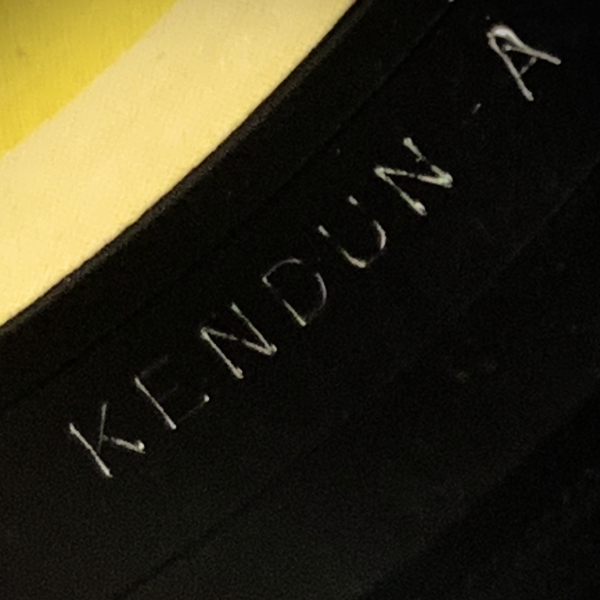
For my listening benchmarks, I reached for my two “Kendun” stamped original LP pressings of Katy Lied, similar to the ones cited in the aforementioned bonus liners. One of my copies is a white label promo (often an indicator of an early first pressing). I also listened to the new standard reissue LP from Geffen/UMe (more on that one later). To my ear, the new UHQR edition of Katy Lied sounds wonderful overall. It is often revelatory, offering rich and subtle insights into the music.
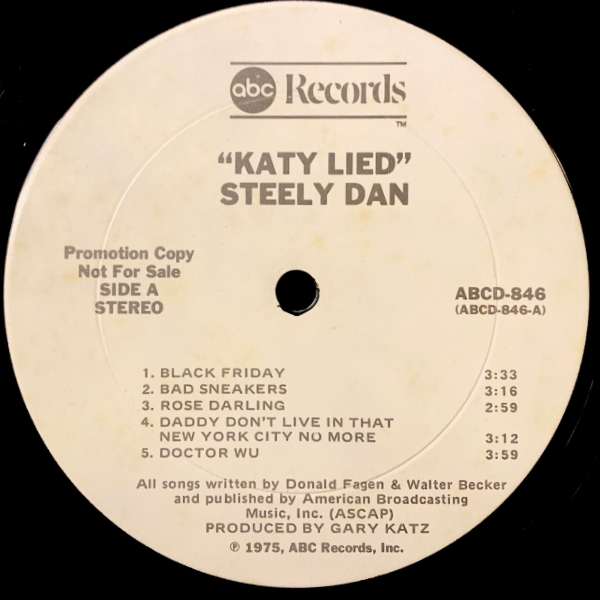
Mettler: I’m also inclined to agree with you there, Mark. While I don’t have a treasured white label promo like you do (as seen above!), I can say my well-played 1975 ABC-label edition of Katy Lied (ABCD-846) absolutely pales in comparison with the UHQR, as does the new Geffen/UMe edition that we’ll discuss more about later on.
Let’s now take the Katy Lied UHQR track by track, and side by side. I’m going to let Mark and Ken drive the train here, as I could essentially say “IBID” to the balance of their insightful listening notes — but I will say upfront that I fully honed in on and grooved mightily along with the full character of Michael McDonald’s ever-rich, ever-soulful background vocals, especially on “Black Friday,” “Bad Sneakers,” and “Any World (That I’m Welcome To),” the latter of which is better than the one I came from, indeed. Anyway — over to y’all. . .
Smotroff: “Black Friday” (LP1, Side A, Track 1) rocks harder than ever, despite having some of the most noticeable effects applied to the vocals. “Bad Sneakers” (LP1, Side A, Track 2) sounds much better than other versions I’ve heard — but for some reason, that odd, phase-shift-y effect on Fagen’s vocal is also a bit more apparent here.
Micallef: Not only does “Black Friday” sound faster, it boogies harder and louder. Go figure. Becker’s bass line is more prominent and cleaner, revealing his wonderful melodicism. Again, the vocals sound as if they went through a Leslie, but the whole song is a visceral smack to the skull.
As for “Bad Sneakers,” Fagen’s lead vocal is more intimate and nuanced, and every instrument is revealed with greater separation and overall clarity, from the jangly piano and deepened tom accent to the drums’ overall peerless sound.
Smotroff: “Rose Darling” (LP1, Side B, Track 1) is easily the best-sounding version of this song I’ve heard. “Daddy Don’t Live in That New York City No More” (LP1, Side B, Track 2) grooves madly. Again, while the vocals do have a lot of effects on them, I didn’t find that to be as off-putting as they are on the original LP.
Micallef: My personal favorite on the album — along with “Doctor Wu” (more on that track in a bit), “Rose Darling” is a sensual feast as a UHQR recipient. Not only is there more depth to the lead vocal and a far wider stereo spread on the drums, chorus vocals are minutely detailed. Guitars and piano have more sustain, yet somehow sound more peaceful.
Smotroff: “Doctor Wu” (LP1, Side A, Track 3) is quite a revelation to hear on the new UHQR edition of Katy Lied. This track has always suffered on original pressings, squeezed in at the end of the single LP’s five-track Side A. Because this song is a fairly dense production with layered vocal harmonies and much nuanced instrumentation, the inevitable compression applied to the original single-disc editions only hinted at the grandeur of this tune. With only three songs on Side B of LP1 of the UHQR, “Doctor Wu” now has plenty of breathing room.
Those rim shots at the start of the song sound super-realistic and woody, while on the original, they feel more like a metronomic tick-tock time marker. The rich vocal harmonies are gorgeous, and Phil Woods’ spectacular sax soloing soars. Porcaro’s drums sound wonderful — and if you listen closely to the fade-out section, his improvisational fills almost pre-echo Steve Gadd’s phenomenal breakdowns on the title track of Aja.
Also listen closely to Fagen’s diction on this tune. If you close your eyes during the second verse, note how he enunciates “Where the Cuban gentlemen sleep all day” — that “g” as he sings “gentlemen” jumps out in very lifelike manner, to the point where, if you close your eyes, you can almost see him mouthing the word. It’s the sort of fine distinction one might experience if you were in the studio with the band, or in the first few rows if they were playing in a small club. This detailing is mostly overlooked on the original editions, perhaps due to compression applied to the track.
Mettler:: Besides that “g” thing (so to speak), I also dig how Fagen slurs all the syllables together on the aforementioned word “gentlemen” in that very same line of “Doctor Wu.” Ken, this is your other favorite track on Katy Lied, so tell me more about it from your POV.
Micallef: Undoubtedly a centerpiece of the album, the UHQR “Doctor Wu” is a feast of detail — the louder rim click of Porcaro’s, the amplified harmony vocals, the magic of Woods’ alto solo, the fuller sound of the drums, and the oddly tightened sense of treble in some parts of the song make a great song ever more profound, and with more to enjoy.
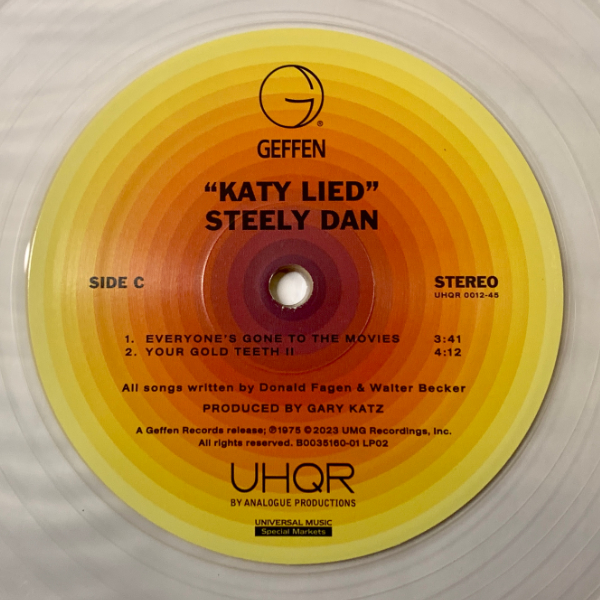
Smotroff: And now, let’s get into LP2. “Everyone’s Gone to the Movies” (LP2, Side C, Track 1) is also amazing, with its haunting saxophone plus super-punchy, distinct drums and congas jumping out in particular. The layered vocal harmony blend here is of course stunning, yet now you can more distinctly appreciate important details such as Victor Feldman’s marimba mirroring the chorus melody lines. Porcaro’s work on the ride cymbal’s bell here sounds especially natural.
Micallef: Though Becker and Fagen would later write about women who were “so fine, so young” and have their song narrators express further unusual desires in tracks like “Negative Girl,” “Hey Nineteen,” and “Cousin Dupree,” here they center on “films in the den” being shown to those “soon to be eighteen.” Either way, it’s still skin-crawlingly-creepy. Sonically speaking, however, the UHQR version of “Movies” reveals more grunt and body overall, with background vocals more honeyed and clearer.
Smotroff: Another stunner, “Your Gold Teeth II” (LP2, Side C, Track 2) feels almost as if I am hearing the song for the first time. One of the more overtly jazz-leaning tracks on Katy Lied, this version sounds especially open, airy, and ultimately gorgeous. Denny Dias’ beautiful electric guitar solo swings, swirls, and sways in a lovely soundstage, emphasizing the interplay with the super vivid piano and the drums.
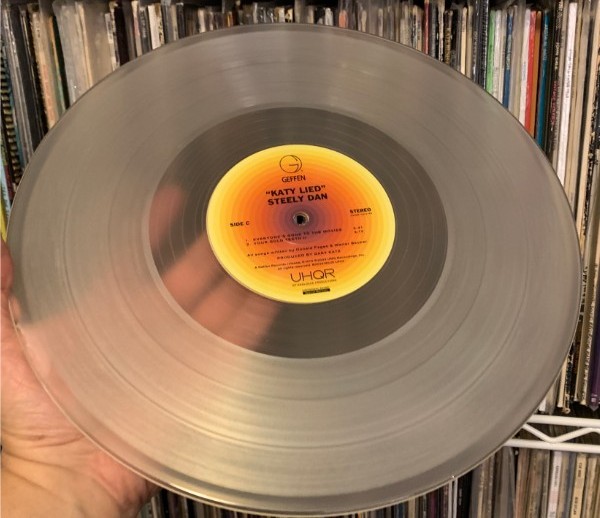
Micallef: A pure swing fest, “Your Gold Teeth II” features an absolutely massive soundfield, with vibraphones darting over the intro like shooting stars. Acoustic piano is more prevalent and tonally robust — as is the flatly tuned, non-jazz tuned bass drum, though this is a classic 3/4 jazz waltz arrangement.
Mettler: Me, I’m partial to the hard-stop ahead of the plaintive piano lines and Porcaro’s supportive drums right before the first line of the lyrics even kick in — and I’m pretty much enamored with every nuance of the performances on all the instrumental breaks throughout “Teeth II” too, for that matter.
Smotroff: “Chain Lightning” (LP2, Side D, Track 1) is a sexy swinging blues, providing a slinky bedrock for Rick Derringer’s ripping guitar work. Listen for the clarity on those cymbal-bell hits right from the opening — there is so much nice air and presence around the drum kit now! Also listen for how distinct the drum-fill break after Derringer’s solo now sounds.
Micallef: A late-night tale of hipster-scoffing, blues-shuffling insight, the UHQR version of “Chain Lightning” is, like everything on this 2LP set, presented with greater resonance, engrossing detail, instrumental and vocal nuance, and splendor, including Derringer’s blistering guitar solo. Oh, and by the way — SD wanted to release this song as a single, later realizing the blues, then as now, doesn’t make for hit singles.
Smotroff: “Any World (That I’m Welcome To)” (LP2, Side D, Track 2) has an especially rich acoustic-piano presence here, but it’s the snare that jumps out, allowing you to feel the resonance of the drum as an instrument, not just a crisp snap. This is an interesting and subtle distinction, as it is the one drum track on the album not played by Porcaro, but instead by Wrecking Crew legend Hal Blaine. Porcaro’s own snare is typically clean, but his signature voicing (if you will) on this album mostly tends to come through his tom-tom fills and cymbal work. Not sure if the difference here on “Any World” is due to Porcaro and Blaine’s playing styles or simply how the drum kits were recorded, but there is a distinction.
Finally, “Throw Back the Little Ones” (LP2, Side D, Track 3) is another one of those end-of-side tracks that benefits greatly from the 45rpm 2LP spread, offering the music much more room to breathe without the inevitable compression applied to the original pressings. Jimmie Haskell’s brilliant horn arrangements are the arguable star here, creating moody ambiance perfect for this album-ending track. Elliott Randall’s guitar solo is rich and round. You can even feel a bit of amplifier tone and studio air/presence coming through the mix. I love how the piano sounds at the very end — super-haunting, and natural-feeling.
Micallef: Wide open and riveting, “Throw Back the Little Ones” literally jumps out of the speakers with its swooping guitars, and popping Porcaro pocket. Guitars have greater dynamics and presence, including Randall’s liquid and acerbic solo, while saxophones have more presence. The entire song, including the fiery vocals and plangent drums, is a marvel, deepening engagement.
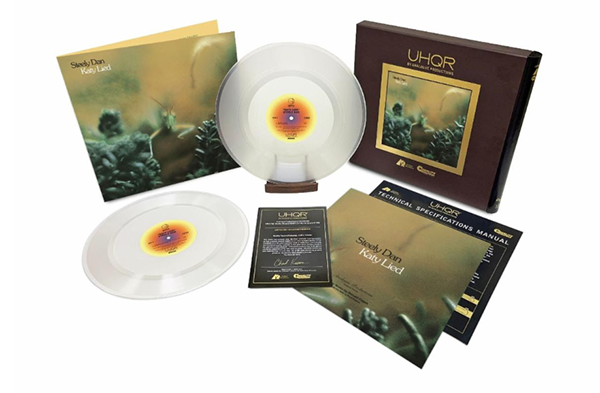
Mettler: And I love the song’s, and the album’s, final lines too, from the last reading of the “Little Ones” chorus: “Use tact, poise, and reason / And gently squeeze them.” So, what about our ratings for Katy Lied, the UHQR edition? Well, we all agree the Music gets an 11, hands down. Or, as Mark put it: “Personally, I rank Katy Lied and The Royal Scam in a continuum — a trilogy (of a sort), along with Aja. So, in my book, they all warrant 11s, music-wise!” Hear, hear!
Sonics-wise, we three collectively give the Katy Lied UHQR a 9.5, but Mark had one note to add about his own individual rating on that front, which was just a tick below Ken’s (a 9) and mine (a 10).
Smotroff: Relative to all prior editions of Katy Lied, the UHQR sounds pretty tremendous. I give it an 8.5 for Sound. I almost gave it a 9, but if I have one nit to pick, it’s just that the noise-floor of the vinyl wasn’t quite as invisible as I’d hoped — but fortunately, it’s mostly only noticeable between tracks, and at the fade of some tracks. Not a deal-breaker, but it was something I noticed across all the sides of my copy.
Mettler: I hear what you’re saying, Mark, but my noise floor was relatively spotless (otherwise, I would have come in at 9.5). On my Katy Lied UHQR, the only nit I could pick is that the center hole on LP1 was perhaps a bit too snug — but playback was smooth and clear, with no issues to note as I deployed my Viborg LP628B record weight on top, and Sublima Chakra Mat underneath. As for the Geffen/UMe edition of Katy Lied, the Music, of course, remains an 11, and the Sound comes in at 7.
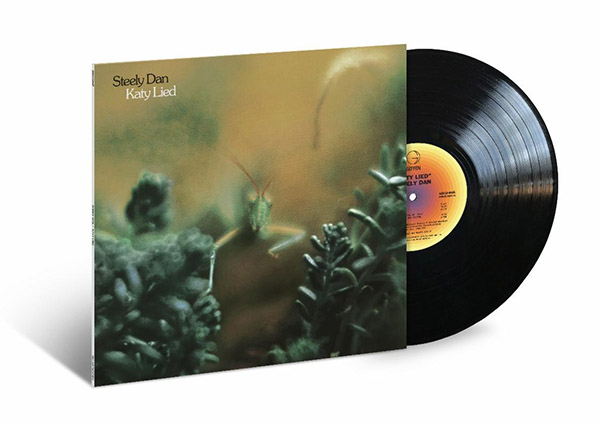
Smotroff: The sound of the Geffen/UMe version of Katy Lied is, well, ok. We know that it was digitally sourced, and while you can play it loudly, there is a bit of fatiguing extra brightness present. The original LP is warmer and rounder-feeling without that brittle, hollow ambiance haunting the edges of the tunes. But if you are a vinyl enthusiast simply looking for a brand-new copy of Katy Lied at a more affordable price point — noting that original NM copies on Discogs at the time of this posting range in price from about $50 to $150 — the new $29.99 standard edition is more than adequate and serviceable, at least until you can make the monetary leap to get the must-have UHQR edition.
Micallef: If you’re an impassioned Dan fan like me, you’ll want both versions (plus the Japanese Katy Lied LP, which also evidences more soul, and more earth, within its overall lumpen demeanor.) Katy Lied is Steely Dan in the pre-sunglasses era. Before the lyrical (and doped) haze of later albums, this is the Dan unplugged — not in the acoustic sense, but emotionally. The oft-curious subject matter of Katy Lied reveals a band with its guard down, eyes wide open. No drugs, no disguises, just pure, unadulterated Steely Dan — and, most especially on the UHQR version, no static at all.
Mettler: And there you have it. Three out of three AP punters-cum-pundits agree — Katy Lied is an important album in Steely Dan’s evolution, and the vast sonic largesse of its new 200g 45rpm 2LP UHQR edition begs repeated listens and spins to explore its many riches. Cue up the Katy Lied UHQR and a Piña colada, my friend, and stake your claim. . .
Author bios: Mike Mettler is the editor of Analog Planet in addition to being the music editor of our sister site Sound & Vision, and he’s also a contributing music editor to one of our other sister sites, Stereophile, in addition to being a frequent Vinyl Icons scribe for Hi-Fi News. Plus, he’s quite partial to vintage 1967 Mustang fastbacks, but that’s a story for another time and place.
Mark Smotroff is an avid vinyl collector who has also worked in marketing communications for decades. He has reviewed music for AudiophileReview.com, among others, and you can see more of his impressive C.V. at LinkedIn.
Former musician, former artist, and former legal wastrel Ken Micallef has written numerous hi-fi equipment reviews for Stereophile and Analog Planet, and his byline has also appeared within Mojo, Electronic Musician, and The Grammys. You can also find him at YouTube (Ken Micallef Jazz Vinyl Audiophile).

STEELY DAN
KATY LIED
200g 45rpm 2LP (MCA/Geffen/Analogue Productions)
LP1, Side A
1. Black Friday
2. Bad Sneakers
LP1, Side B
1. Rose Darling
2. Daddy Don’t Live In That New York City No More
3. Doctor Wu
LP2, Side C
1. Everyone’s Gone To The Movies
2. Your Gold Teeth II
LP2, Side D
1. Chain Lightning
2. Any World (That I’m Welcome To)
3. Throw Back The Little Ones
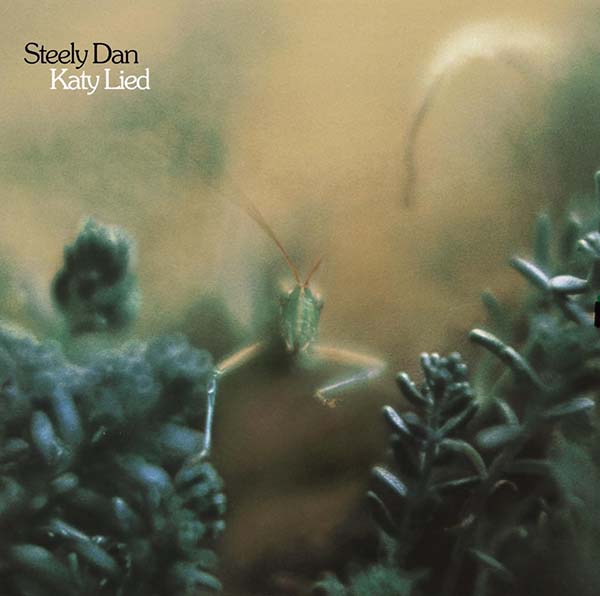
STEELY DAN
KATY LIED
180g 1LP (Geffen/UMe)
Side A
1. Black Friday
2. Bad Sneakers
3. Rose Darling
4. Daddy Don’t Live In That New York City No More
5. Doctor Wu
Side B
1. Everyone’s Gone To The Movies
2. Your Gold Teeth II
3. Chain Lightning
4. Any World (That I’m Welcome To)
5. Throw Back The Little Ones
